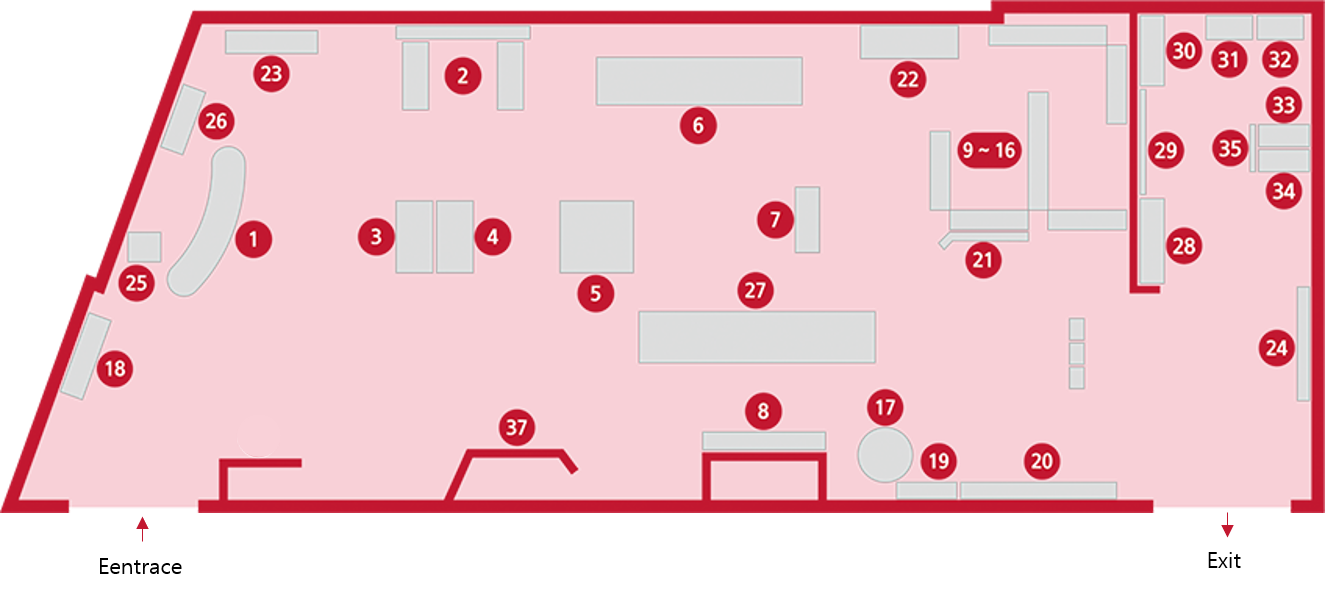Exhibition Hall R
Exhibitions>Exhibition Hall R
Cirulation, Movement and Flow
Based on a deep understanding of energy, you will learn about the principles behind the production, transfer, and reproduction of energy, which is like the blood that circulates throughout the city. Here, you will also find out more about the historical sites of Seoul that led to the development of Korea’s information and communications technology (ICT) as you listen to the stories of the people who helped achieve the city’s technological growth.
- 1 How powerful is static electricity?
- 2 Can people create energy?
- 3 Can you boil water using light?
(1) Fresnel lens - 4 Can you boil water using light?
(2) Boiling water - 5 How can you detect changes in air flow?
- 6 How does an object move when there is no friction?
- 7 What energy sources move the city?
- 8 What does decomposing trash leave behind?
- 9~16 Yesterday, today, and tomorrow of ICT Seoul
- 17 Data cluster
- 18 How is movement transferred?
- 19 Spinning the relay cogwheel
- 20 How can you achieve changes in movement?
- 21 Can a shaking pendulum make another pendulum shake?
- 22 Another way of observing the world, “Infrared light”
- 23 Why does the strength of an electric current change?
- 24 What happens when lights of different colors mix?
- 25 Sign the e-guestbook with your photos
- 26 Singing chair
- 27 Why does the pendulum dance like a snake?
- 28 Ainse information wall
- 29 Ainse mapping wall
- 30 Hologram webtoon: Areum and Daun create a school that’s free from cyber violence
- 31 Interactive media wall: Ainse baseball
- 32 Interactive animation: Find the puppy with Ainse
- 33 Protect Ainse!
- 34 Run! Guardian of the internet world!
- 35 Ainse photo zone
- 36 Information desk
- 37 Today’s event



